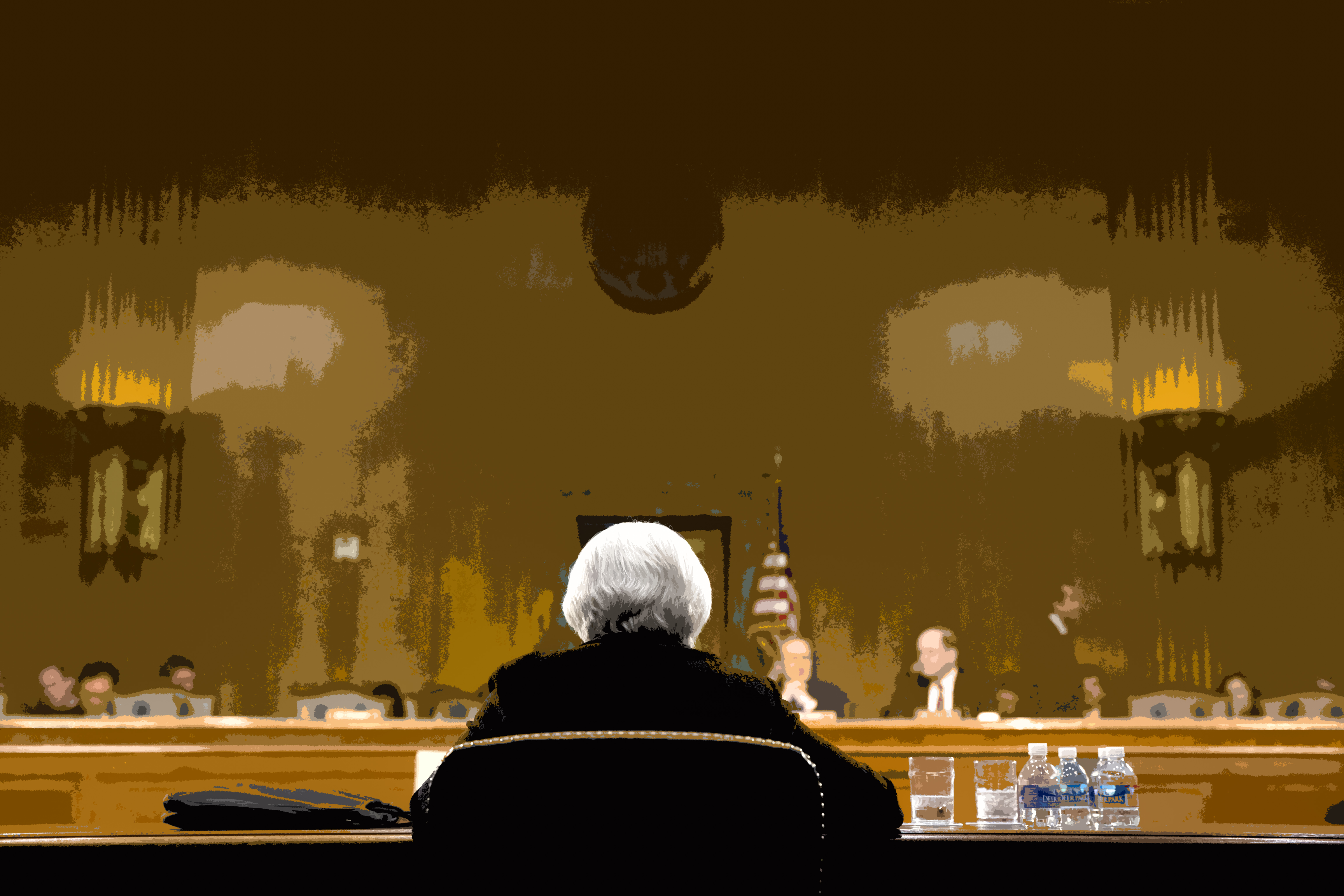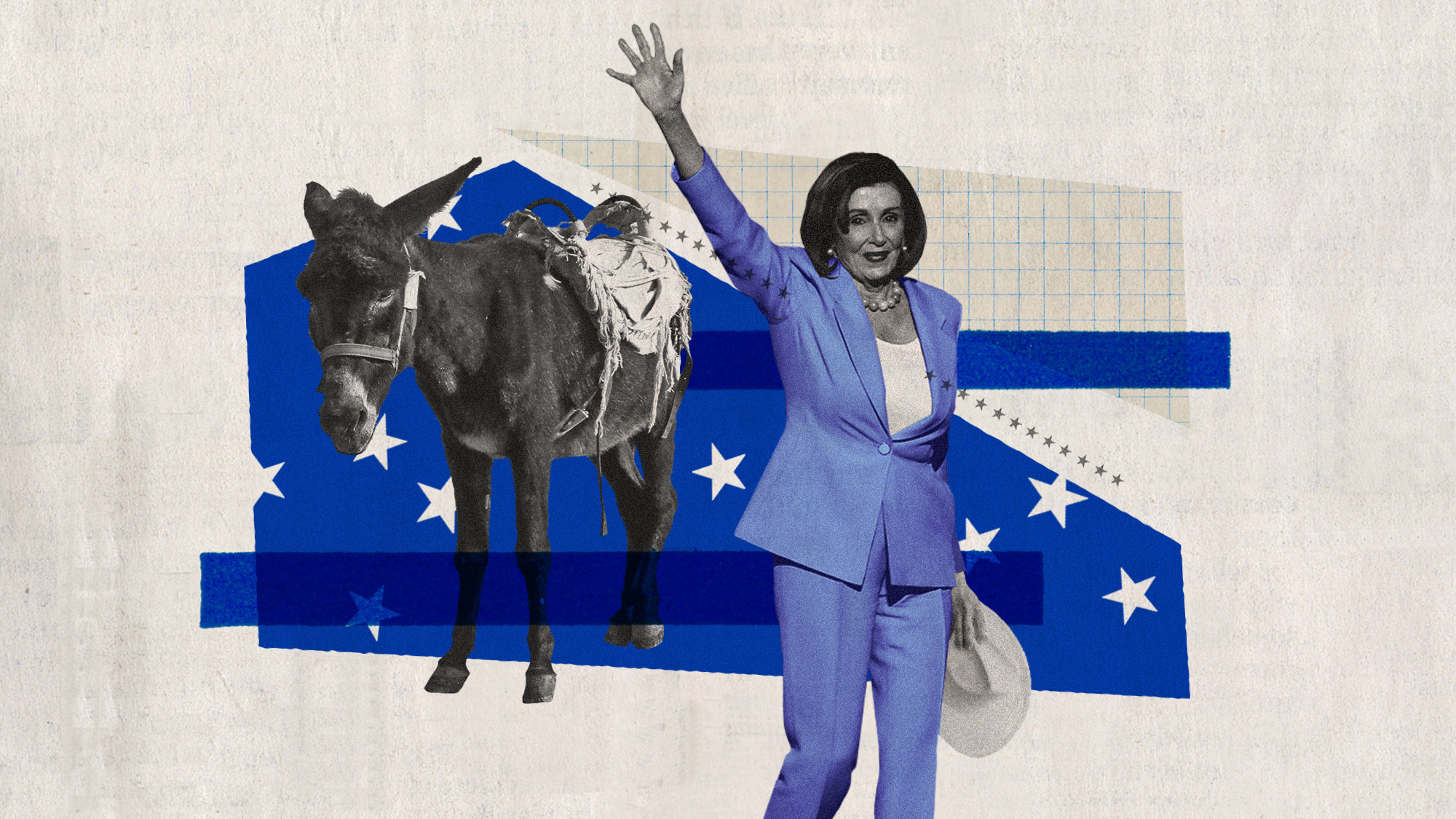How Congress screwed the Federal Reserve
If Congress had done its job, Janet Yellen wouldn't be in this position


Yesterday, the Federal Reserve deflated a lot of expectations (get it?) by deciding to hold interest rates at zero for a few more months. And I have to imagine that, while she was holding her press conference, Fed Chair Janet Yellen was stealing glances towards Congress and thinking: "You. You bozos put in me in this ridiculous position."
For anyone who pays attention to monetary policy, the drama that attended yesterday's announcement was rather remarkable for this staid and technocratic institution. As Mohamed El-Erian huffed in Bloomberg on Wednesday, it's also a bit weird: Yellen and the Fed have made it abundantly clear any rise in rates would start out very small and be extremely gradual.
But more than that, the Fed's toolkit for fighting recessions and boosting the economy is just inherently limited.
The Week
Escape your echo chamber. Get the facts behind the news, plus analysis from multiple perspectives.

Sign up for The Week's Free Newsletters
From our morning news briefing to a weekly Good News Newsletter, get the best of The Week delivered directly to your inbox.
From our morning news briefing to a weekly Good News Newsletter, get the best of The Week delivered directly to your inbox.
Its standard tool is controlling interest rates — cutting them to encourage growth, and hiking them to put the brakes on and fight inflation. Then there are more unconventional policies like quantitative easing, which the Fed uses when it can't cut interest rates any lower — which is the position it's been in since 2008. But both of these approaches boil down to creating new money, then injecting it into the economy by buying up various financial instruments. The end goal of both approaches is to shore up aggregate demand, and the difference is just what sort of instruments the Fed buys and the strategic timing of the purchases. It also has various tools it can use to try and coax money out of the reserves sloshing around the banking system, and spit it back out into the economy proper.
So the Fed uses the banking system and the financial market as its routes for dispersing new money. This creates a certain "trickle down" aspect. Economic growth is a feedback loop between purchases by everyday Americans on one side, and businesses creating new jobs on the other to tap that demand and turn it into profits. Both high-end tax cuts and monetary stimulus amount to injecting money into the business end of that feedback loop. But businesses don't create jobs just to create jobs. They create them to tap demand. The money has to make its way to the other side of the loop to really get things going.
And it's just not clear that's happened. The Fed has cut interest rates all the way to zero, and it massively increased the money supply through quantitative easing. But while that certainly seems to have put a floor under the economy, the effect has been rather anemic compared to what we needed. A lot of the cash appears to have gotten stuck in corporate reserves, or been left to churn around in the stock market. In fact, the Fed went out on such a limb after 2008 that it's not even clear its traditional tools still work in the same way.
But the Fed isn't the only institution that can boost aggregate demand by moving new money into the economy. Congress can do it too. Except instead of creating new dollars, Congress does it by borrowing. If it just hikes spending but then also hikes taxes, or it cuts taxes but then cuts spending, it just shuffles around the money that's already in the economy. New money injections require an expanded deficit.
A free daily email with the biggest news stories of the day – and the best features from TheWeek.com
More importantly, Congress' fiscal policy route is just a lot cleaner and more direct. If the government borrows a lot of money and uses it to bulk up food stamps, welfare, unemployment, housing vouchers, Medicaid, and the like, and to shore up government-funded jobs, then all that money goes right into people's pockets: straight to the purchasing side of the feedback loop.
After the Great Recession, Congress certainly did some of that. Many of those safety net programs just expanded automatically when the collapse hit, as they're designed to. Lawmakers also further boosted some of those programs, cut the payroll tax, and passed the stimulus — an $840 billion grab-bag of programs.
But it didn't last. The new spending by Congress was quickly overwhelmed by spending cuts at the state level. And then the Republicans gained enough power in the legislature to force federal spending cuts through the debt ceiling showdowns.
But most damning of all was a memo that circulated through the Obama administration in its initial days, and which came to light in 2012. It featured work by some of the new White House's top economists, estimating a stimulus of $1.8 trillion would be needed to close the hole in the economy. They never even tried to push this idea, fearing blowback from Congress and the GOP minority in the Senate in particular.
One last interesting wrinkle: You can see how fiscal and monetary policy operate on different paths. But at the most fundamental macroeconomic level — once you've stripped out all the specific policy clutter — fiscal and monetary stimulus actually converge on the same basic conceptual act: drive new money into the economy and boost aggregate demand.
In fact, some intrepid reformers want to change Fed policy to essentially collapse the monetary-fiscal distinction. Instead of printing new money and shoving it into financial markets, the Fed would just distribute it in equal, per person checks to every American to spend as they see fit. That ought to fix the feedback loop problem.
But for American politics that remains the most radical of proposals. In the meantime, we're left with fiscal policy for fighting recessions. And Congress, under the GOP's manic grip, thoroughly abdicated that responsibility a long time ago.
That's left the Federal Reserve and Janet Yellen (and Ben Bernanke before her) desperately trying to squeeze every last drop of blood they can from the monetary policy stone.
Jeff Spross was the economics and business correspondent at TheWeek.com. He was previously a reporter at ThinkProgress.
-
 What happens to a Democratic Party without Nancy Pelosi?
What happens to a Democratic Party without Nancy Pelosi?TODAY'S BIG QUESTION The storied former speaker of the House is set to retire, leaving congressional Democrats a complicated legacy and an uncertain future
-
 The plant-based portfolio diet focuses on heart health
The plant-based portfolio diet focuses on heart healthThe Explainer Its guidelines are flexible and vegan-friendly
-
 Gregory Bovino: the officer leading Border Patrol’s aggressive tactics
Gregory Bovino: the officer leading Border Patrol’s aggressive tacticsIn the Spotlight He has been referred to as the Border Patrol’s ‘commander-at-large’
